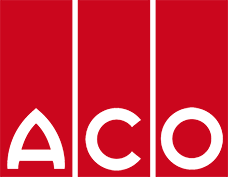Frequently asked questions
Water management in a green roof is vital to sustain plants and vegetation with a natural supply of water, whilst protecting users against the effects of standing water.
Draining a green roof can be challenging and to protect the building structure from ingress, proper water management is critical. Surface water must be removed to make the area serviceable and sub-surface water must be removed to prevent root rot in vegetation.
ACO has designed a product specifically to assist designers in managing stormwater in green roofs by maintaining an equilibrium of water in the soft bedded area. In simple terms, this is done by capturing stormwater both on the surface via the grate and subsurface through perforations in the side walls of the channel.
To learn more about this product, click here.
Floor depth is a key consideration in building construction, with balconies in particular requiring shallow drainage systems to fit within a small screed.
ACO has a range of shallow drainage products specifically designed to solve this problem. To learn more, click here.
Any external doorway is vulnerable to water, but level thresholds are particularly susceptible to failure as there is no physical barrier to intercept water and protect the building. In order to use sliding or bi-fold doors with a level threshold entryway, a drainage channel must be positioned adjacent, but external to the building.
The drainage channel must also integrate with a drainable aluminum sill to collect water that slides off the glass, into the door sill and into the channel. Learn more about this application here.
To learn about ACO’s specialist range of door drainage products, click here.
ACO has identified five legislated criteria that grates should satisfy to ensure user safety in and around buildings. Grates should be heel friendly, slip resistant, barefoot friendly and bicycle wheel, wheelchair and walking cane safe.
These five features help to critically assess the suitability of the grate for the application. Learn more about legal and user requirements of grates here.
To prevent water infiltration from damaging a building aesthetically and structurally, waterproofing is a key component of a building’s construction. Waterproofing specialists provide essential insight into the correct waterproofing for different applications and should be consulted. Even a small leak can have catastrophic effects on the structural integrity of a building and lead to costly repairs.
To ensure long-term durability, waterproofing must be used in conjunction with other water control measures, such as water stops and drainage cells. Waterproofing can be applied either with a painted, or rolled membrane over a slab to prevent water penetrating the slab and causing deterioration over time. Waterproofing must be turned into, sealed or clamped against every drainage component so that collected water cannot ingress through the concrete slab or timber joisted floor.
Drainage channels can be manufactured with custom configurations of tile upstands and extended edges to provide a membrane flange for waterproofing to adhere to. This reduces reliance on sealants and facilitates a water tight joint.
Click here for typical channel and membrane installation details for various applications.
We provide free online and in-person CPDs on this and many other topics! Request your training session here.






